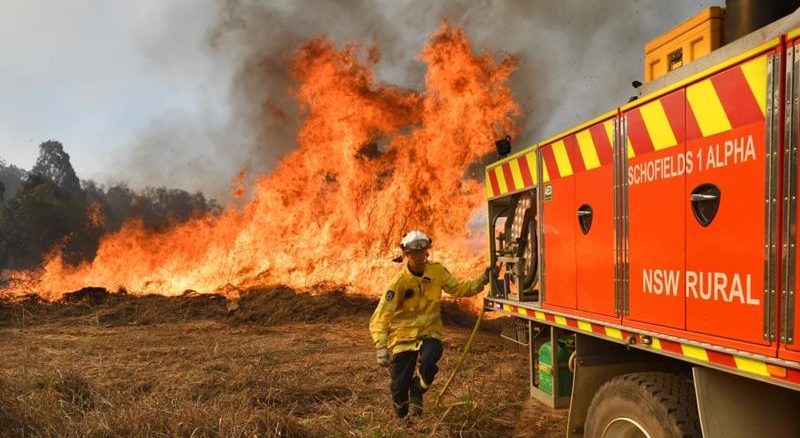
Our beautiful land is not only being ravished by fire, but there’s a more sinister force of nature hell-bent on permanently damaging Australia and our way of life.
I’m referring to the tweets, facebook posts and an array of other social media pathways that every minute of everyday spread misinformation (some innocently, but much of it out-and-out deliberate lies) as they join national “debates” via their mostly smartphones.
The attacks from, in most cases, Mr and Mrs Anonymous, have been with us for a long time, but have reached peak heat in recent months matched only by the fierceness of the fires.
Sadly, many people scour a range of social media airwaves (including Wikipedia, which High School students are warned not to use) in search of “information” and alleged “facts and figures” supporting their particular point of view.
And then, without checking the veracity of this new information, they lick their lips and pass it on, to be again kicked along by another lip licker.
Just how easily damaging misinformation is born, was revealed this week by an ABC investigation into posts seen worldwide with outlandish and unsupported claims about arsonists, images of devastation, pictures of injured koalas and confronting fires going viral.
Some tweets using #ArsonEmergency on Twitter were amplifying unproven suggestions arson had been the overwhelming cause of the recent blazes (which is totally incorrect), according to the ABC investigation.
Queensland University of Technology (QUT) researcher Dr Timothy Graham analysed a sample 315 accounts posting #ArsonEmergency and said around a third of them displayed highly automated and inauthentic behaviour.
In layman’s terms, that means they could be bots or trolls.
Several widely shared maps that look to show blazes all over the country have given a distorted view of the the fires engulfing, among other things, most of Queensland and the Northern Territory, sparking news commentators worldwide to lick THEIR lips and get stuck into Australia and our government for letting such a situation to “get out of hand”.
One image in particular was spread around the world, with high-profile stars like singer Rihanna sharing it on Twitter.
Giving the clear impression that the whole of Australia was virtually ablaze it has since been flagged by Facebook and Instagram as “false information”.
It was flagged by the tech giant because those sharing it said it was an actual NASA photograph, when it was really a 3D visualisation.
Another map that has been widely spread on social media comes from MyFireWatch, hosted by the West Australian Government’s land information authority, Landgate.
It has been shared around the world and It is that image that a senior research scientist at the CSIRO, Dr Juan Guerschman, said when users zoom out too far on maps such as these: “The map ends up with lots of flames all around the place”.
“The user may end up with a false impression that much more of the area is burning than what it really is, which is bad already anyway.”
A popular Facebook post that was passed around in the past week or so had the writer condemning the government for not sending the Defence Force into the fire battle, which brought a quick comment that ADF personnel had joined the battle in November last year. Oops.
Moving on from the maps, however, one does not have to look far to find a growing number of posts coming with vindictive, hateful language, a trend which Courier Mail columnist Michael O’Connor and many of his readers condemned this week.
We were reminded of this on-line abuse-fest this week when Prince Harry and Megan Markle announced they were stepping back from Royal duties.
In a prepared statement the Duke and Duchess of Sussex said they intended to seek a lower profile, build financial independence and divide their time between Britain and North America as they “carve out a progressive new role”.
But there is no doubt the trigger that sent them in this direction was the bitter, nasty social media and press criticism of Ms Markle from the minute she entered the Royal domain.
The abuse prompted the British press (ironic, seeing the press are at the forefront of the continual criticism of the Royals) to call on the abusers to tone it down.
The Times said that comments targeting Ms Markle focused on her race and claimed her pregnancy (she subsequently had a baby son) was fake.
The Times newspaper reported in an editorial called “Vile Abuse” that many of the comments made about Ms Marklle and her sister-in-law Catherine, Duchess of Cambridge, are “too vicious to publish here and there have even been threats of violence”.
“Women receive more abuse online than men and this sad truth seems to apply just as much to the Royal family,” the newspaper said.
Neither Duchess has their own account, but with 7.1 million Instagram followers, the Kensington Palace account attracts the brunt of the online abuse.
Harry has complained since 2016 of abuse and harassment against his wife Meghan in British newspapers and social media and late last year went so far as to take legal action against a tabloid.
He wrote in a scathing statement in October that Meghan was “one of the latest victims of a British tabloid press that wages campaigns against individuals with no thought to the consequences”.
He compared Meghan’s treatment to that of his late mother, Princess Diana: “I lost my mother and now I watch my wife falling victim to the same powerful forces.”
SheSociety is a site for the women of Australia to share our stories, our experiences, shared learnings and opportunities to connect.

Leave a Reply